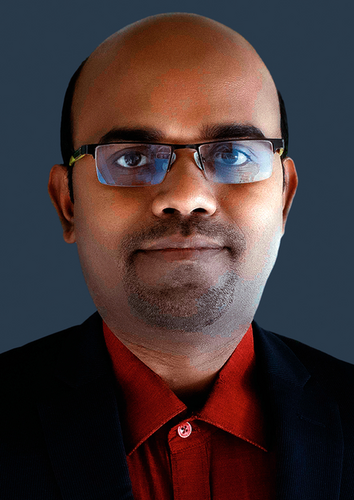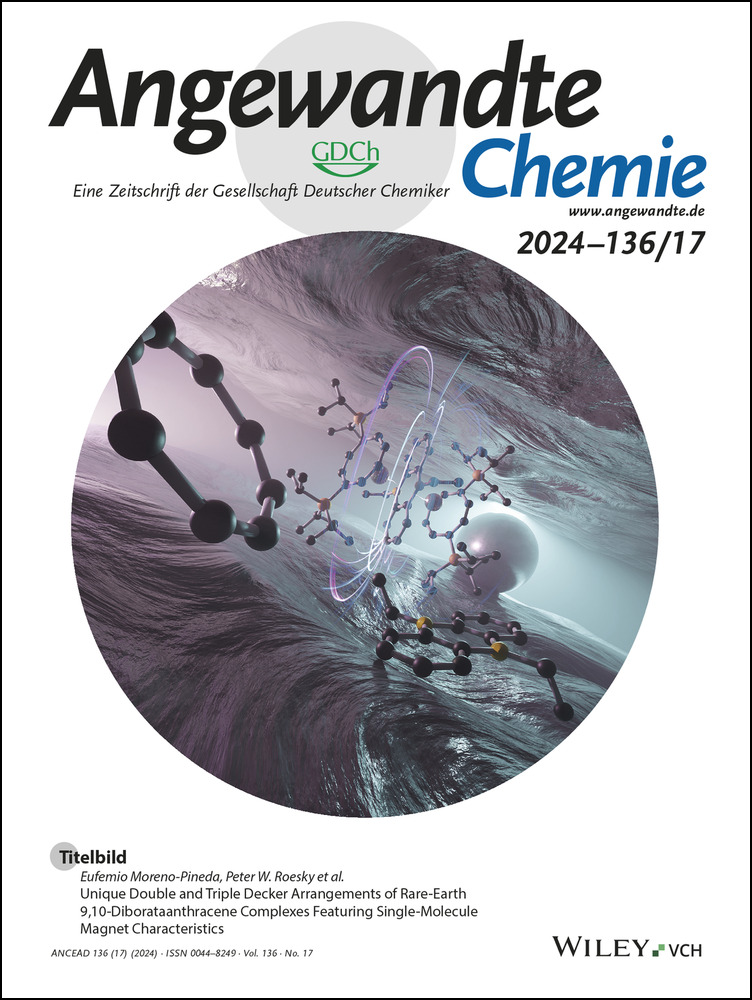Ujjal Das
Graphical Abstract
“The most exciting thing about my research is that it is very different from textbook organic and organometallic chemistry, thus providing opportunities to create new knowledge about chemical structure, bonding and reactivity… The most important thing I have learned from my students is their enthusiasm for chemistry.” Find out more about Ujjal Das in his Introducing… Profile.
Ujjal Das
The author presented on this page has published his first article as a submitting corresponding author in Angewandte Chemie:
“NHC-Supported 2-Sila- and 2-Germavinylidenes: Synthesis, Dynamics, First Reactivity and Theoretical Studies”: S. Kumar, L. R. Maurer, G. Schnaken, U. Das, A. C. Filippou, Angew. Chem. Int. Ed. 2024, 63, e202400227.
-
Position, Location:
-
Lecturer, Institute of Inorganic Chemistry, University of Bonn (Germany)
-
Homepage:
-
-
ORCID:
-
-
Education:
-
2002–2005 B.Sc. Ramakrishna Mission Residential College, Narendrapur (India)
2005–2007 M.Sc. Indian Institute of Technology Kanpur (India)
2009–2014 Ph.D. with Prof. Dr. A. C. Filippou, University of Bonn (Germany)
Since 2015 Senior scientist in the research group of Prof. Dr. A. C. Filippou, University of Bonn (Germany)
-
Research:
-
Low-valent heavier main group organometallics
-
Hobbies:
-
Playing with my children Ujas and Urvi
My first experiment was the synthesis of pyrophoric iron from ferrous oxalate dihydrate in an exhibition in RKMRC college back in 2003 under the guidance of Prof. Dr. Arogya Varam Saha.
I chose my current career path because I wanted to be a school teacher since my primary school days; later on during my high school years chemistry became my most favorite subject; finally in the course of my undergraduate studies organometallic chemistry proved to be my passion. My sincere gratitude to my mentors, who made my dream a reality.
The most exciting thing about my research is that it is very different from textbook organic and organometallic chemistry, thus providing opportunities to create new knowledge about chemical structure, bonding and reactivity.
A turning point in my career was joining the research group of Prof. Dr. A. C. Filippou as a Ph.D. student.
The biggest challenges facing my generation of scientists are bringing interdisciplinarity into their research projects, delivering innovative ideas and convincing themselves that fundamental research precedes applied research.
The most important thing I have learned from my students is their enthusiasm for chemistry.
The most important quality of a mentor is the ability to deliver enduring curiosity about the subject.
The best advice I have ever been given is from my mother: “Self-learning is the best learning.”
My biggest inspiration is my father's compliments.
If I won a million dollars in the lottery I would contribute to the modernization of primary schools in West Bengal, India.
If I could be granted a superpower, it would be my alchemistic brain so that I would be able to predict the optimum reaction conditions of any chemical reaction without experiments and I could Chemdraw the best chiral ligand for any stereoselective catalytic reaction without a ligand pool screening.
My most important role models are my parents and siblings because they teach me to persevere and be diligent.
I lose track of time when I am with my wife Kusum.
My favorite place on earth is my hometown, Kolaghat, West Bengal, India.
To improve my work-life balance, I try to drive the equilibrium in favor of both sides, work and life, in a timely manner.
Behind the Science
Our research group is involved in the development of the chemistry of reactive low-valent tetrel species by employing N-heterocyclic carbene (NHC) as a supporting ligand. In particular, our discovery of Si(NHC) transfer reaction caught my attention, when I saw a year ago Severin's diazoolefin (NHC)CN2, which, I thought, could also be a potential C(NHC) group transfer reagent and a unique ligand for low-valent main group chemistry. This idea was soon experimentally realized by Sandeep Kumar, a highly skilled Ph.D. student in our group. The most challenging part of the project was the studies of the stereodynamics of NHC-supported 2-tetrelavinylidenes.





